This is the ultimate guide to pumpkin and winter squash! I love cooking with this starchy vegetable and thought it might be handy to put together a reference guide to different types of squash and pumpkin varieties. I have also included pumpkin and squash recipes and ideas.
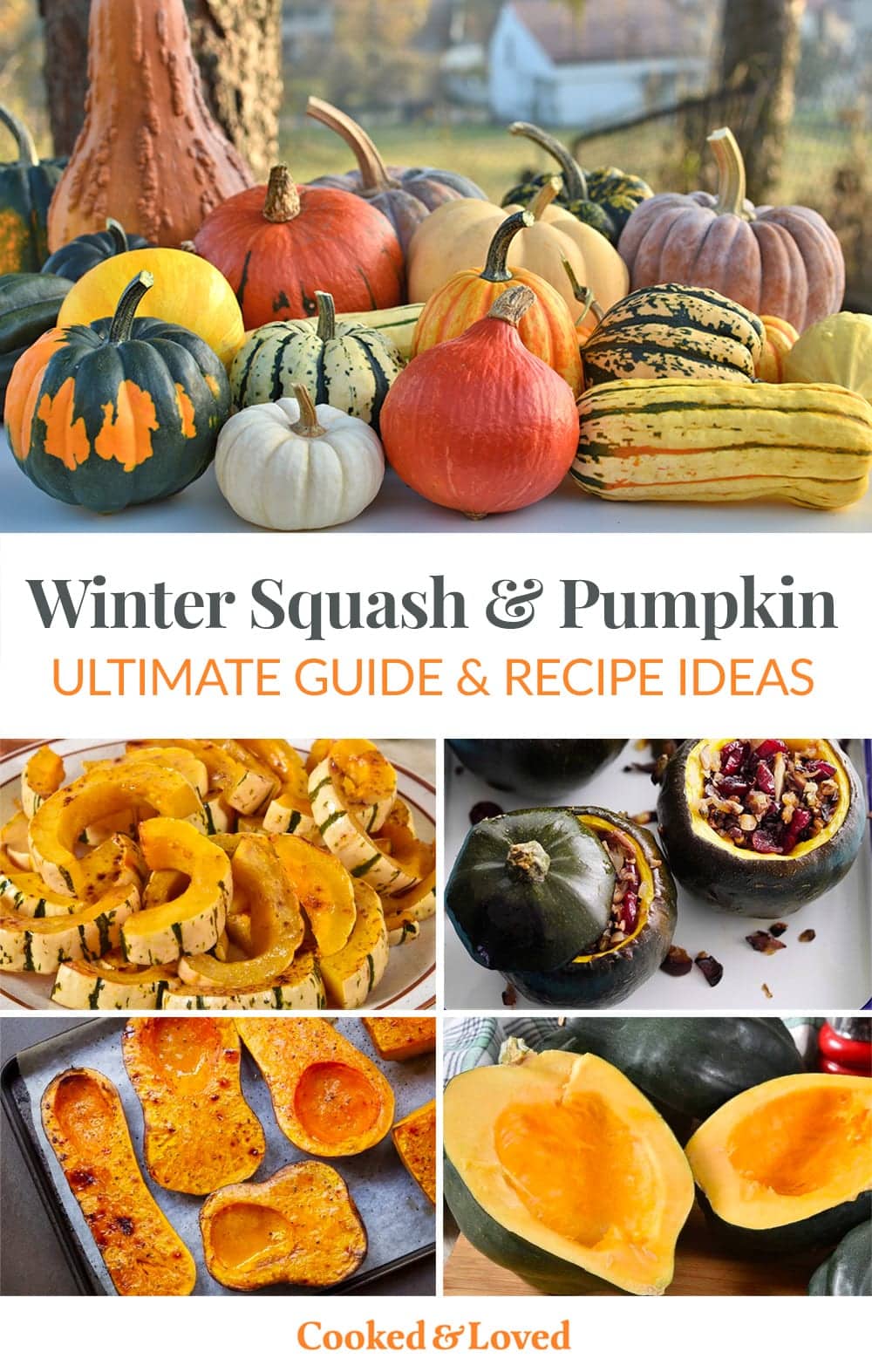
Jump to: ℹ️ Overview | Squash vs Pumpkin | Australian vs American Names | When Is Pumpkin & Squash in Season? | Different Types | Butternut Squash or Butternut Pumpkin | Kabocha Squash | Kent Pumpkin | Queensland Blue Pumpkin | Spaghetti Squash | Golden Nugget | Gem Squash | Acorn Squash | Delicata Squash | Classic American Pumpkin | Summer Squash | Ways To Cook | Nutrition | Best Pumpkin & Winter Squash Recipes
Squash and pumpkin are versatile and flavourful vegetables that are enjoyed in many cuisines around the world. They come in various shapes, sizes, and colours, and each type has its own unique characteristics and uses.
In this article, I’ll explore some of the most popular types of squash and pumpkin, including winter squash, summer squash, and pumpkin, and provide some recipe ideas to inspire your next meal. Winter squash, in particular, is a great ingredient for hearty and warming dishes during the colder months.
Whether you’re a fan of classic pumpkin pie, spicy butternut squash soup, or creamy acorn squash gratin, you’re sure to find a recipe that piques your interest in this guide to types of squash and pumpkin, along with some ideas for how to cook and prepare them.
Squash vs Pumpkin
Squash and pumpkin are both members of the same family, Cucurbitaceae, and they share some similarities in appearance and taste. However, there are some differences between the two.
- Appearance: Squash can have a variety of shapes, colours, and sizes, ranging from small and round to long and cylindrical and can come in colours such as green, yellow, and white. Pumpkins are typically round and have a bright orange colour.
- Taste: Squash and pumpkin have slightly different flavours. Squash tends to have a more subtle, nutty taste, while pumpkin has a sweeter, earthy flavour.
- Uses: Both squash and pumpkin are used in a variety of recipes, from soups and stews to pies and desserts. However, pumpkins are more commonly used in baking, such as in pumpkin pie, while the squash is often used in savoury dishes like roasted or grilled squash.
- Nutrition: Both squash and pumpkin are nutritious and low in calories. They are good sources of fiber, vitamins A and C, and potassium. See more on this further below.
Australian vs American Names For Pumpkin
The term “winter squash” is not commonly used in Australia. Instead, Australians typically refer to the various types of squash by their specific names, such as butternut squash, spaghetti squash, acorn squash, and pumpkin.
What is commonly referred to as “pumpkin” in OZ is actually a type of winter squash known as “Queensland Blue” or Kent pumpkin. These types of pumpkins have a bluish-grey or greenish exterior and bright orange flesh and are often used in savoury dishes like stews, soups, and roasted vegetables.
In contrast, in the United States, the term “pumpkin” typically refers to a type of squash known as Cucurbita pepo, which has a round or oblong shape and a bright orange colour. This type of pumpkin is often used in baking, particularly in traditional pumpkin pie.
To make it super simple, all pumpkins are a type of winter squash. It’s a very versatile, starchy vegetable, used all around the world, and is super popular around fall, Halloween and Thanksgiving.
Most of the pumpkin parts can be used: sweet and nutty orange flesh, the seeds, flowers, and even the skin is delicious when roasted.
When Is Pumpkin & Squash in Season?
The season for pumpkin and winter squash in Australia is summer and autumn (Dec-May), in the northern hemisphere, it’s during autumn/fall and winter. Having said that, you can find many common types of squash all year round.
Different Types Of Squash & Pumpkins (With Pictures)
Let’s look at some of the most common squash varieties including winter squash, pumpkin (classic American and Australian) and summer squash.
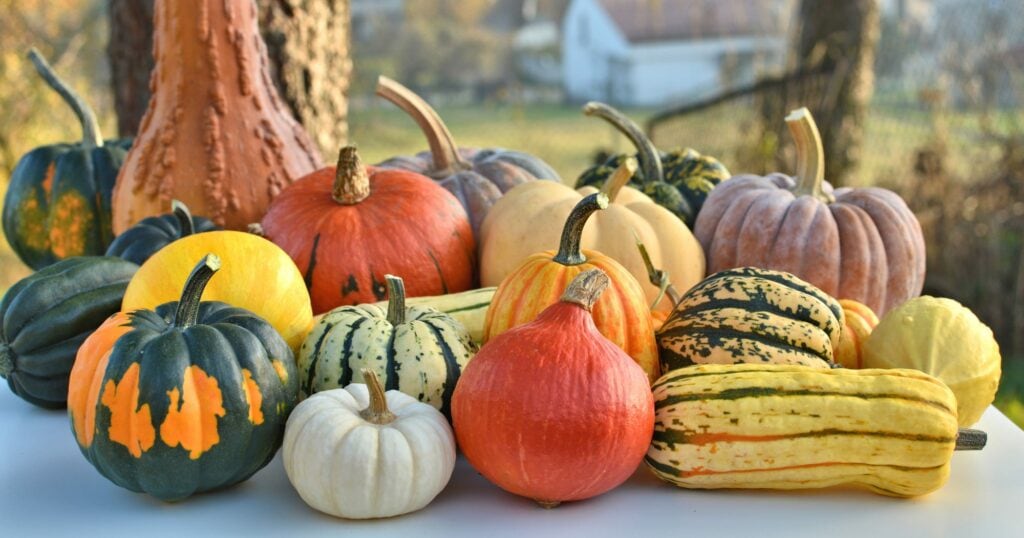
Butternut Squash or Butternut Pumpkin
Butternut squash is the groovy, oblong-shaped winter squash native to North America but is very common in many countries. It has a smooth, tan exterior and a bulbous end that contains the seeds.
When you slice into this baby, you’ll be greeted by a bright orange flesh that’s all about that slightly sweet, nutty flavour, making it a total party in your mouth!
Butternut squash is a versatile ingredient that can be used in a variety of dishes. It can be roasted, grilled, sautéed, or pureed, and is often used as a base for soups and stews. It can also be used in risottos, pasta dishes, and casseroles, or simply roasted with herbs and spices for a delicious side dish.
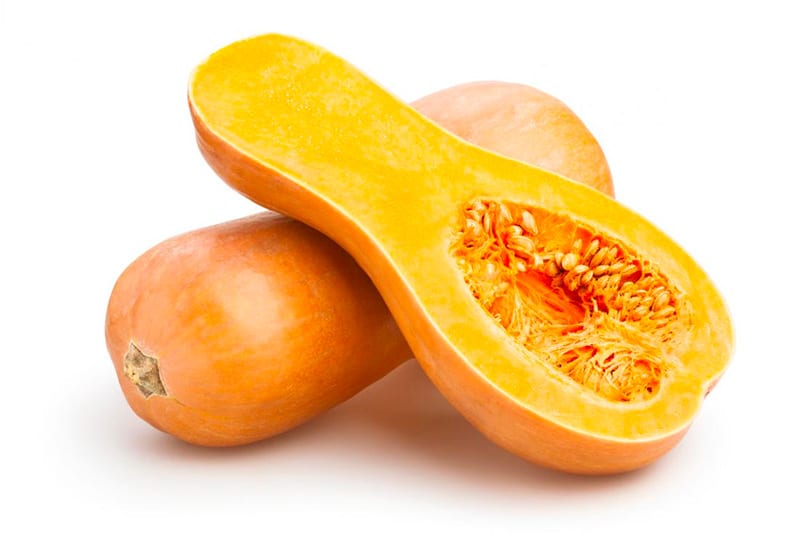
Kabocha Squash
Kabocha squash, also known as Japanese pumpkin, is a type of winter squash that is native to Japan. It has a hard, knobbly green or deep orange exterior, and a sweet, dense flesh that is similar in taste and texture to a sweet potato. The flesh of this squash is a bright orange colour and has a nutty, slightly sweet flavour that makes it a popular ingredient in many dishes.
Kabocha squash is a versatile ingredient that can be used in a variety of dishes. It can be roasted, grilled, or steamed, and is often used in soups, stews, and curries. In Japanese cuisine, this squash is a popular ingredient in tempura, where it is deep-fried in a light batter. It can also be used as a filling in savoury pies or mashed and served as a side dish.
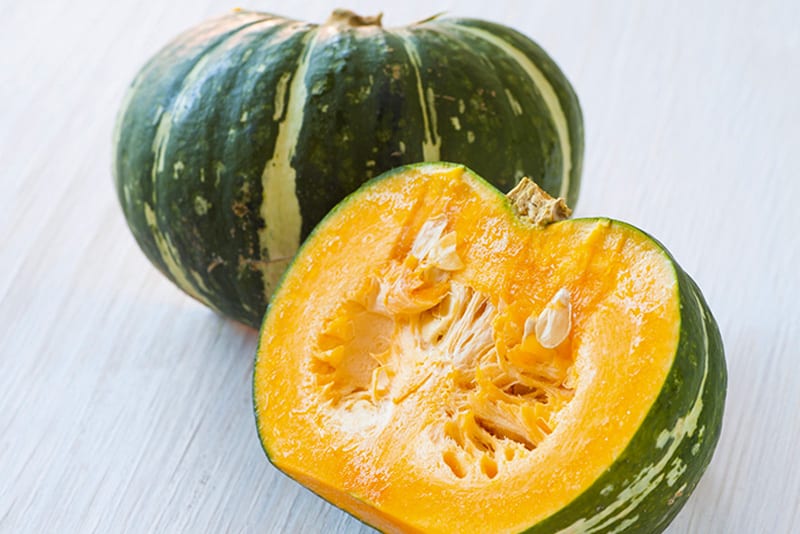
Kent Pumpkin
Kent pumpkin is a type of pumpkin that is commonly found in Australia and New Zealand. It has a bulbous shape and smooth, thin skin that can be either green or orange. The flesh of this pumpkin is sweet and nutty, and it is often used in soups, stews, and roasted vegetable dishes.
In Australian cuisine, Kent pumpkin is a popular ingredient in many dishes, including pumpkin soup, roasted pumpkin, and pumpkin pie. It can also be used in curries and casseroles, or mashed and served as a side dish. It adds a sweet and nutty flavour to many dishes and is a good source of important nutrients. I would say it is very similar to Kabocha squash mentioned above.
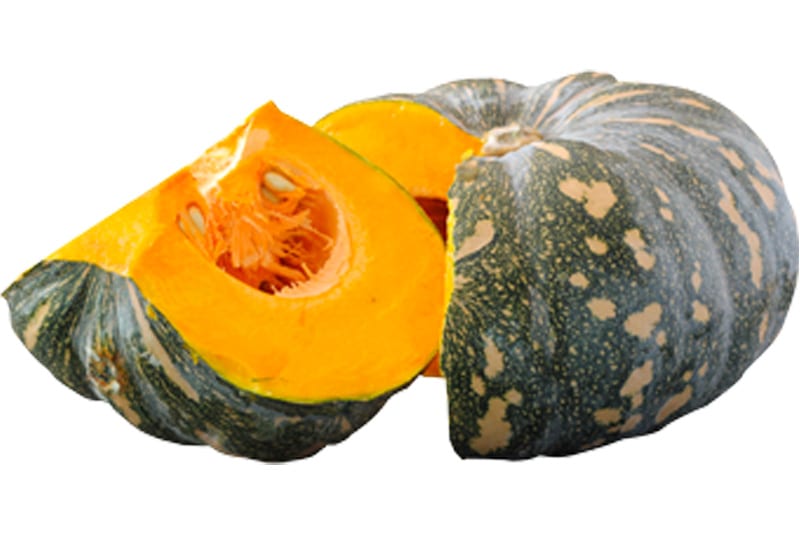
Queensland Blue Pumpkin
Queensland Blue pumpkin is a type of winter squash that is native to Australia. It has thick, hard blue-grey skin and sweet, golden-orange flesh that is smooth and dry. The flavour of Queensland Blue pumpkin is often described as nutty and sweet, with a slightly earthy taste.
Queensland Blue pumpkin is a popular ingredient in soups, stews, and roasted vegetable dishes. It can also be used in savoury pies or mashed and served as a side dish. The hard skin of the Queensland Blue pumpkin makes it ideal for long-term storage, and it can be stored for several months in a cool, dry place.
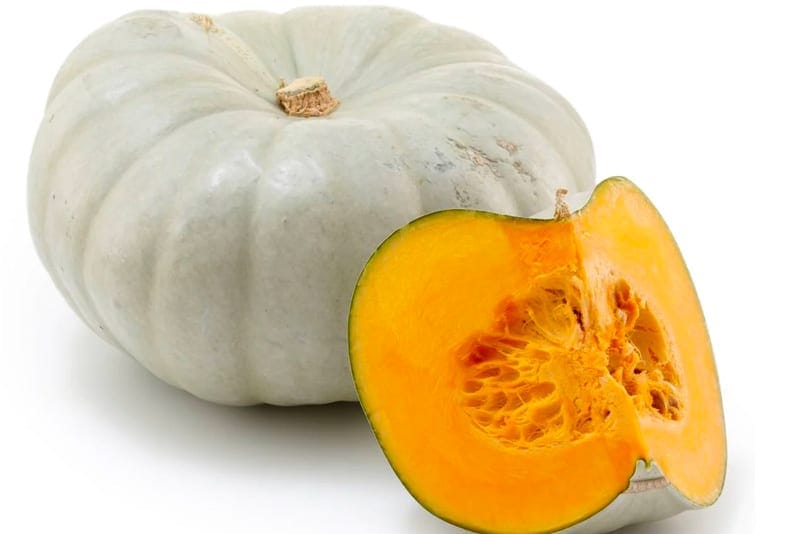
Spaghetti Squash
Spaghetti squash is a type of winter squash that, when cooked, has flesh that resembles strands of spaghetti. It has a yellow or orange oblong shape, with a smooth, hard exterior. The flesh of spaghetti squash is mild and slightly sweet, making it a versatile ingredient that can be used in a variety of dishes.
To prepare spaghetti squash, it is typically roasted or baked in the oven. Once cooked, the flesh can be scraped out with a fork, creating long, spaghetti-like strands. These strands can then be used as a substitute for traditional pasta in many dishes, making spaghetti squash a popular choice for those looking to reduce their carbohydrate intake.
Spaghetti squash can be served with a variety of sauces and toppings, including marinara sauce, pesto, or grated cheese. It can also be used in salads or mixed with other vegetables for a healthy and flavourful side dish. I have a full guide to spaghetti squash and recipes here.
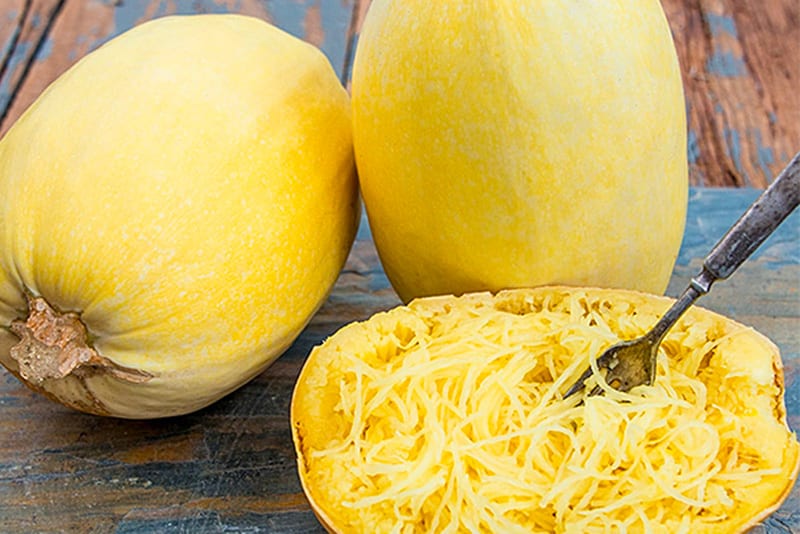
Golden Nugget Squash or Pumpkin
Golden Nugget Squash (or pumpkin) is a type of winter squash that is small in size and has a distinctive bright orange colour. It has a round, slightly flattened shape with deep ribs and thin but hard skin. The flesh of the Golden Nugget pumpkin is dense and sweet, with a creamy texture that makes it ideal for baking and roasting.
In cooking, Golden Nugget pumpkin is often used in sweet and savoury dishes. It can be roasted, baked, or boiled, and is a popular ingredient in pumpkin pies, soups, and stews. It can also be used as a filling for savoury pastries, or mashed and served as a side dish. It’s also great for stuffing!
The small size and bright colour of the Golden Nugget pumpkin make it an attractive addition to fall decor and seasonal displays. It is also a popular choice for gardeners, as it is relatively easy to grow and produces a bountiful crop of small, flavourful pumpkins.
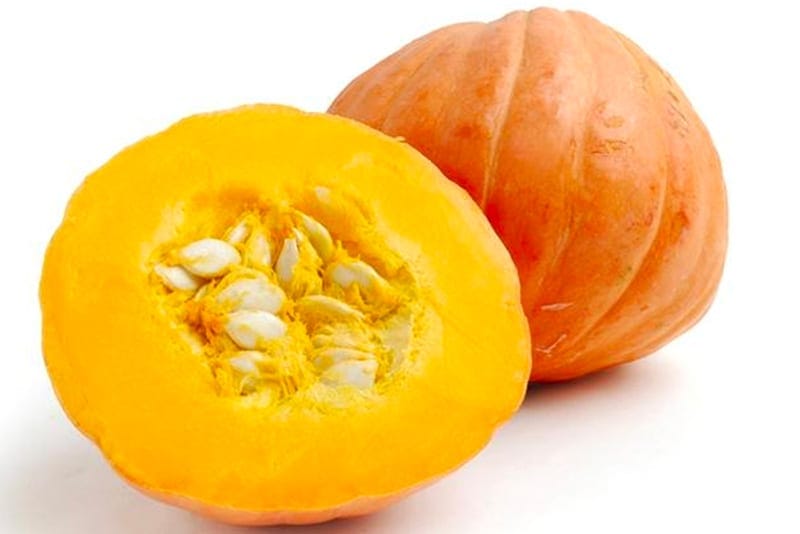
Gem Squash
Gem squash is a type of summer squash that is native to South Africa. It is small, round, and has a distinctive green or yellow skin with white stripes. The flesh of the gem squash is firm, sweet, and slightly nutty in flavour.
In South African cuisine, gem squash is a popular ingredient in many dishes, including stews and curries. It can also be boiled or steamed and served as a side dish, often with a dollop of butter and a sprinkle of salt and black pepper.
To prepare gem squash, it is typically washed and then cut in half. The seeds and membranes are removed, and the squash is then boiled or steamed until it is tender. It is important not to overcook the gem squash, as it can become mushy and lose its flavour.
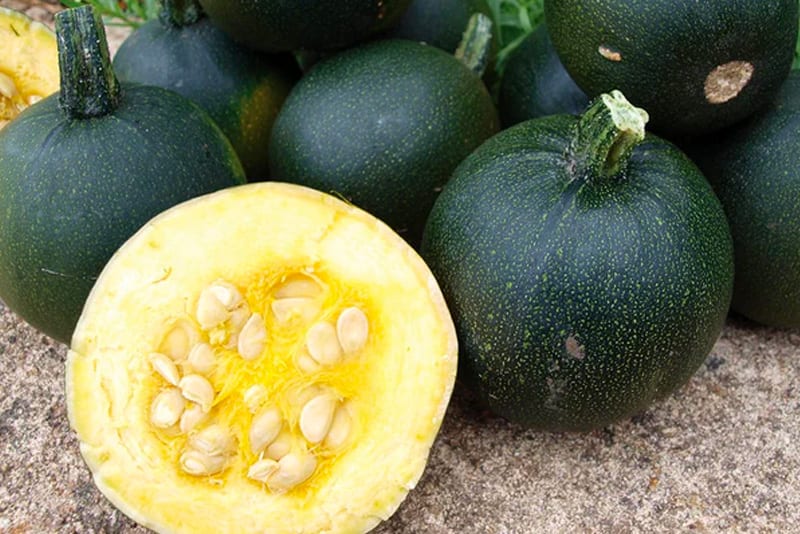
Acorn Squash
Acorn squash is a type of winter squash that is named for its distinctive acorn-like shape. It has a hard, ribbed exterior that is usually dark green in colour, although some varieties may be orange or yellow. The interior of acorn squash is a bright yellow-orange colour with a sweet, slightly nutty flavour.
To prepare acorn squash, it is typically cut in half and the seeds and fibers are removed. It can then be baked, roasted, or boiled until tender. Acorn squash can be served as a side dish, stuffed with a variety of ingredients such as rice, quinoa, or ground meat, or pureed into a soup.
Acorn squash is a versatile ingredient that can be used in both sweet and savoury dishes. It pairs well with a variety of flavours, including cinnamon, nutmeg, and brown sugar in sweet dishes, and garlic, thyme, and sage in savoury dishes.
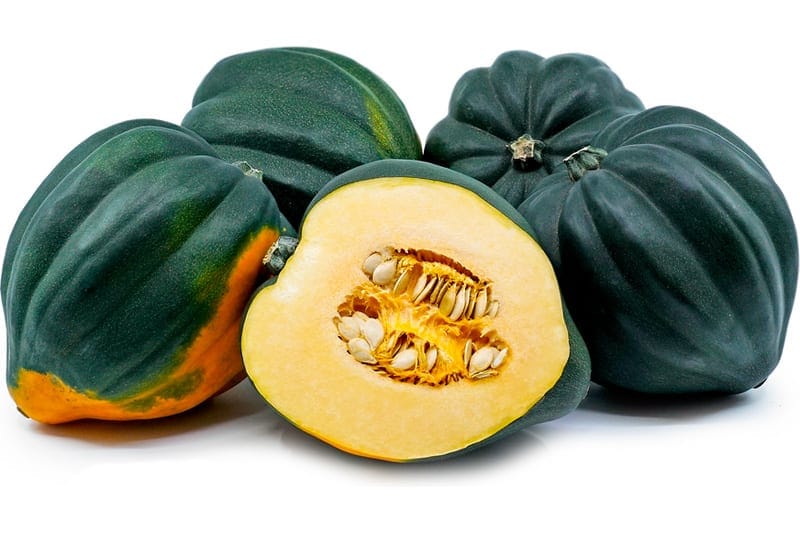
Delicata Squash
Delicata squash, also known as sweet potato squash or peanut squash, is a type of winter squash that is oblong in shape and has creamy-yellow skin with green stripes. The flesh is a rich golden color and has a slightly sweet and nutty flavor.
Delicata squash is a popular ingredient in fall and winter dishes. It can be roasted, baked, or sautéed, and is often used in soups, stews, casseroles, and as a side dish.
One of the advantages of this winter squash squash is that it is easy to prepare compared to other winter squashes because its skin is edible, and it has a relatively thin rind. To cook it, simply slice it lengthwise, scoop out the seeds, and bake or roast it. Its sweet, tender flesh makes it a versatile ingredient in both sweet and savoury recipes.
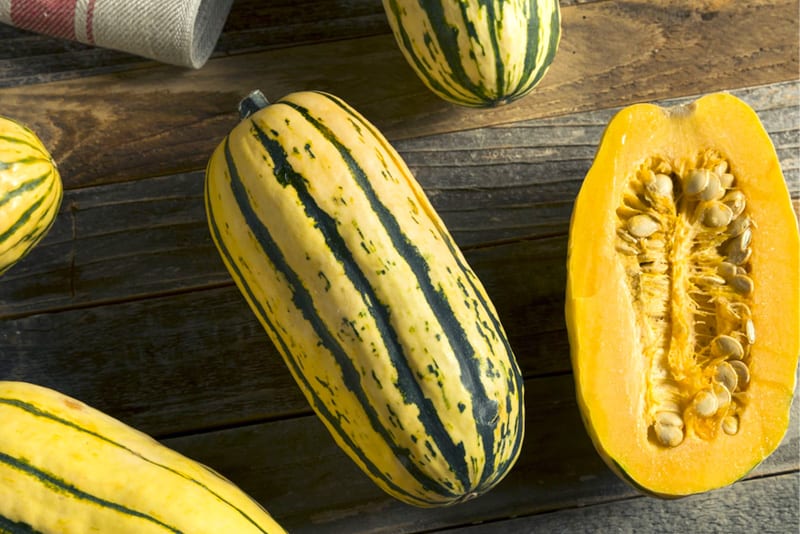
Classic American Pumpkin
American pumpkin is a type of pumpkin that is native to North America and is one of the most widely cultivated varieties of pumpkin in the United States. It is also known as the Connecticut Field pumpkin, as it was first cultivated in the state of Connecticut.
American pumpkins are typically large, round, and have a bright orange color, with a thick, hard skin and fibrous interior. They are highly nutritious and are an excellent source of vitamins A and C, potassium, and dietary fiber.
In the United States, American pumpkins are commonly used in a variety of dishes, including pumpkin pie, pumpkin bread, and roasted pumpkin. They are also often carved into decorative jack-o-lanterns during Halloween.
In addition to its culinary uses, American pumpkin has also been used in traditional medicine to treat various conditions, including digestive issues, inflammation, and diabetes. The seeds of the American pumpkin are also highly nutritious and are a good source of protein, healthy fats, and minerals.
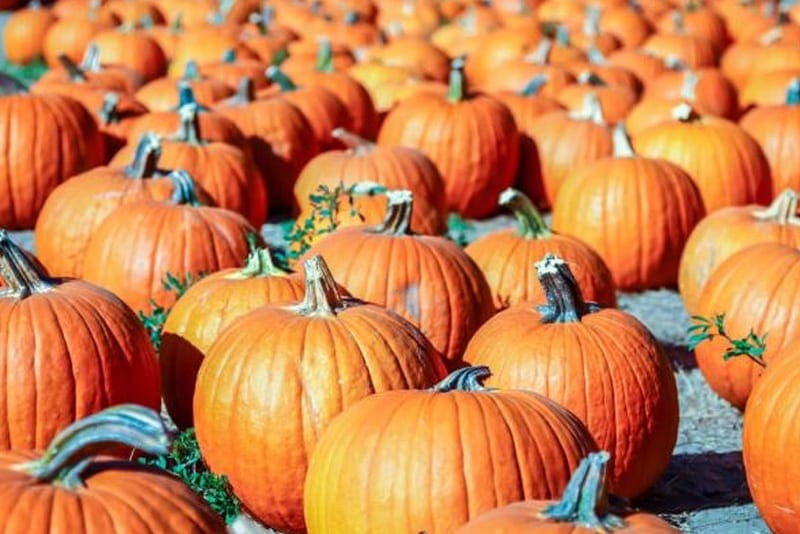
Summer Squash
Summer squash is a type of squash that is harvested in the summer, typically between May and September, hence its name. It belongs to the Cucurbitaceae family and is closely related to other types of squash, such as zucchini and pumpkin.
Summer squash comes in different varieties, including yellow squash, zucchini, pattypan squash, and crookneck squash. It has a soft skin that is edible, and a mild, slightly sweet flavor. It can be eaten raw or cooked and is often used in a variety of dishes, such as salads, stir-fries, soups, and casseroles.
Summer squash is a nutritious vegetable that is low in calories and carbohydrates and high in vitamins and minerals, including vitamin C, vitamin A, potassium, and magnesium. It is also a good source of fiber, which can help promote digestive health.
When choosing summer squash, look for firm, unblemished specimens that feel heavy for their size. Store them in a cool, dry place for up to a week. To prepare summer squash, simply wash and cut off the ends, and then slice or dice as desired.
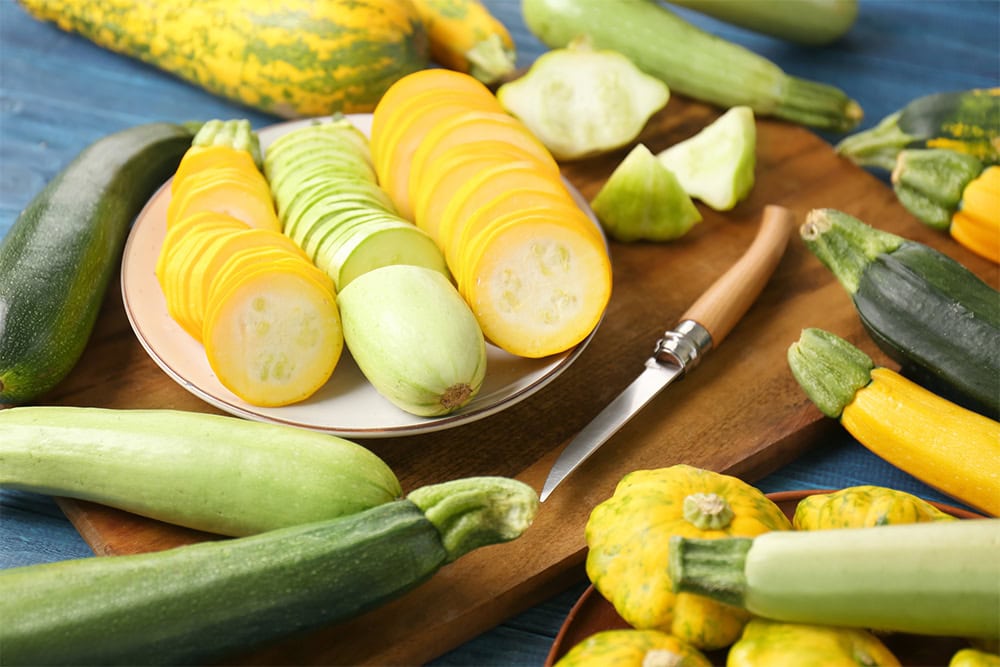
Ways To Cook Winter Squash & Pumpkin
Here are some popular methods for cooking winter squash:
Roasting Squash
Roasting is one of the most popular ways to cook winter squash. Simply cut the squash in half, remove the seeds, and roast in the oven until tender. You can roast or bake the full halves, cut them into wedges or cubes. You can season the squash with salt, pepper, and your favourite herbs and spices.
Cook whole and unpeeled squash for about 1.5 -2 hours; cut up and peeled for about 30 minutes, both in a 175-200 C / 375-400F oven.
Boiled Squash
Boiling is another simple method for cooking winter squash. Cut the squash into cubes or slices and boil in salted water until tender. Cook the whole pumpkin for 1 hour or peeled and diced for 10-15 minutes. You can use the cooked squash in soups, stews, or mash it for a side dish.
Steaming
Steaming is a gentle method for cooking winter squash that helps preserve its nutrients. Cut the squash into pieces and place in a steamer basket over boiling water. Cover and steam until tender.
Grilled Pumpkin
Grilling adds a smoky flavour to winter squash. Cut the squash into slices, brush with oil, and grill until tender and slightly charred. Peeled and cut into 1-2 inch slices or cubes, pumpkin should be grilled for about 20 minutes.
Sautéing Squash
Sautéing is a quick and easy way to cook winter squash. Cut the squash into cubes or slices and sauté in a pan with oil or butter until tender and slightly caramelized.
Mashed, Pureed or Used In Baking
Pumpkin is grated raw or added as cooked puree and in stewed dishes like curries and casseroles – 10-15 minutes for the pumpkin to cook.
Then there is also spaghetti squash, which when cooked can be scraped into translucent, mild-flavoured, spaghetti-like strands. Learn how to cook spaghetti squash here.
Learn how to make spaghetti squash using an Instant Pot pressure cooker.
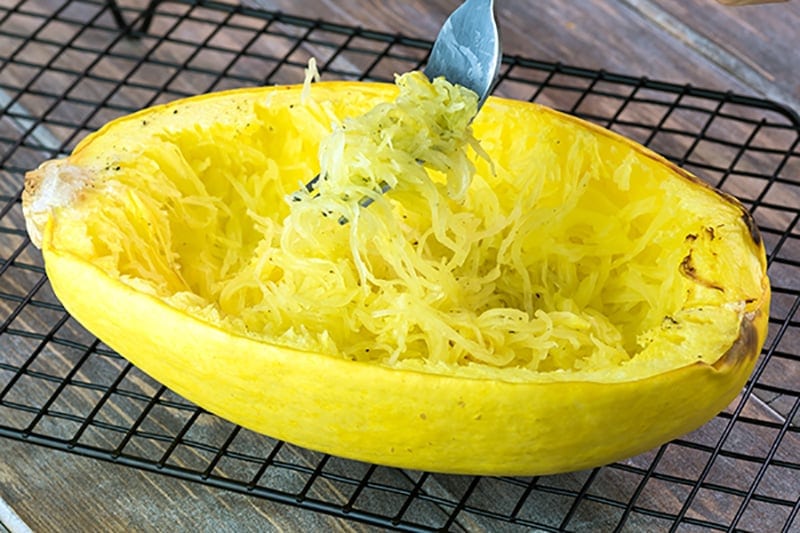
Winter Squash & Pumpkin Nutrition
Winter squash, including varieties such as butternut, acorn, and kabocha, are highly nutritious and a great addition to any healthy diet. Here are some key nutritional facts about winter squash:
- Low in Calories: Winter squash is relatively low in calories, with approximately 80 calories per one-cup serving of cooked squash.
- High in Fiber: Winter squash is a good source of dietary fiber, with one cup of cooked squash containing about 6 grams of fiber, which can help to promote digestive health and regulate blood sugar levels.
- Rich in Vitamins and Minerals: Winter squash is a good source of many essential vitamins and minerals, including vitamin A, vitamin C, potassium, and magnesium.
- Antioxidants: Winter squash is also a great source of antioxidants, including carotenoids like beta-carotene, which can help to boost immunity and protect against chronic diseases like heart disease and cancer.
- Gluten-free & grain-free: Winter squash is naturally gluten-free and can be a great alternative for those with gluten sensitivities, celiac disease or digestive issues.
- Lower in carbohydrates: This depends on the sweetness of the squash but overall this vegetable is a healthier source of carbohydrates. Summer squash and spaghetti squash are particularly popular i low-carb and keto diets.
Overall, winter squash is a great choice for a healthy and nutrient-dense diet. It can be used in a variety of dishes and is a great addition to soups, stews, and roasted vegetable dishes.
Best Pumpkin & Winter Squash Recipes
Okay, now that we have gone through different types of squash, let’s get some cooking inspiration. From comforting soups and stews to sweet and savoury baked goods, these squash recipes are perfect for adding a seasonal twist to your favourite dishes.
Simple Roasted Winter Squash
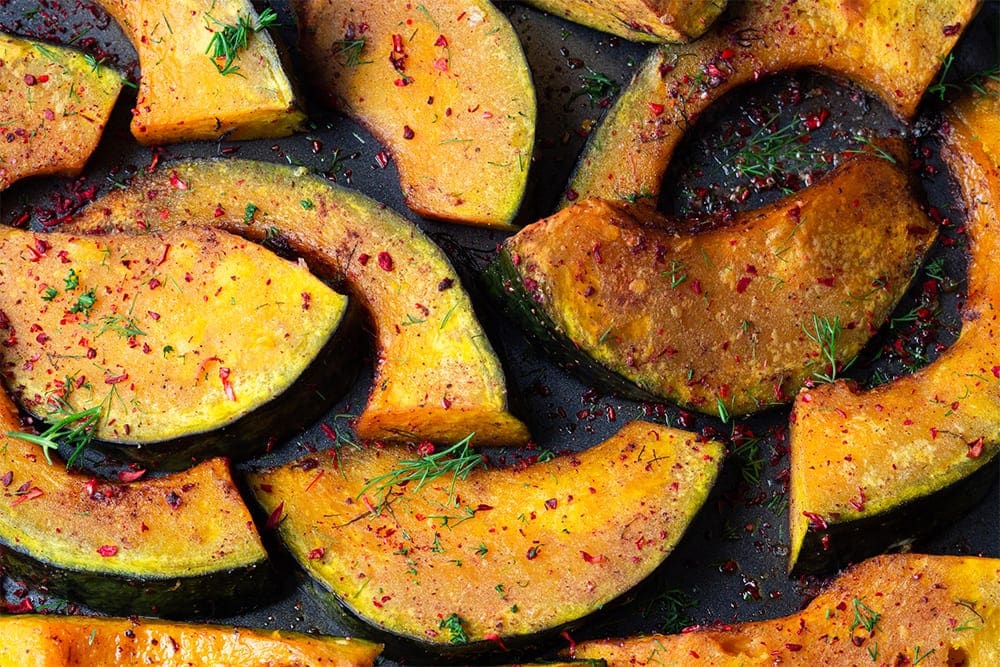
Peel (or leave the peel on) and cut the squash into 1 cm wedges; toss in some melted ghee or coconut oil, about 2 tablespoons, sea salt, ground black pepper and rosemary. Place on a tray lined with baking paper – 1-2 cm apart – and roast for 30 minutes flipping over halfway. You can try it with other hardy herbs like sage or thyme instead of rosemary. I like to throw in a few unpeeled cloves of garlic at the same time.
Healthy & Fabulous Pumpkin Salads
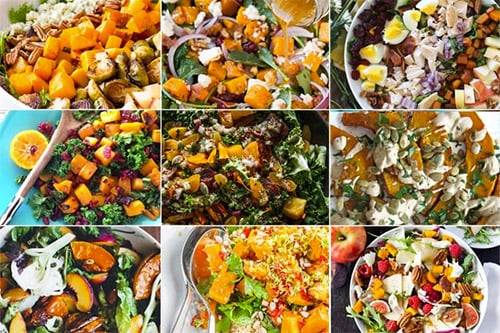
Kabocha Squash Roasted With Thyme & Garlic
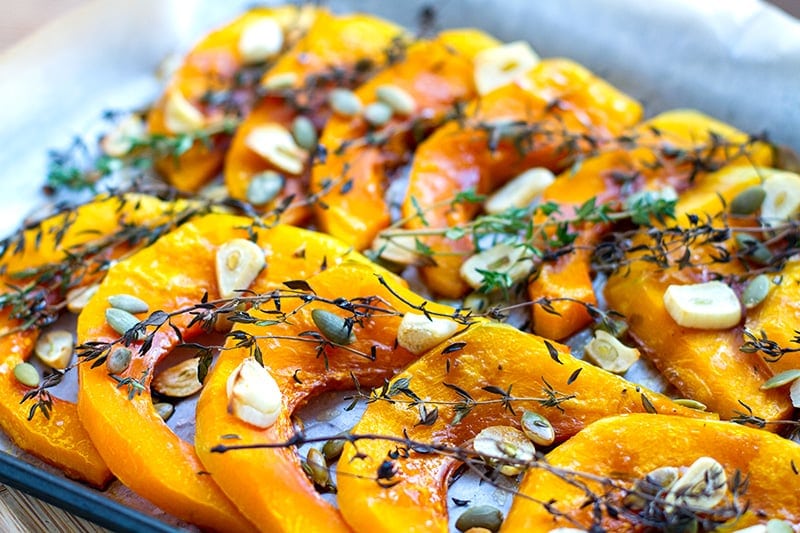
Spicy Pumpkin Soup with Coconut Milk
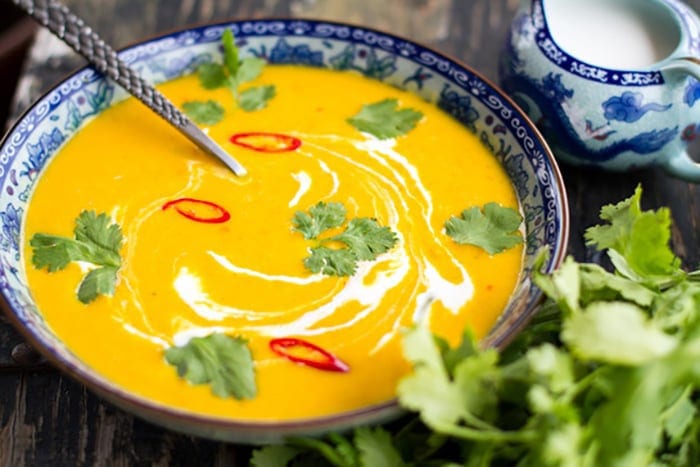
Pumpkin & Cauliflower ‘Dal’ (Legume-Free)
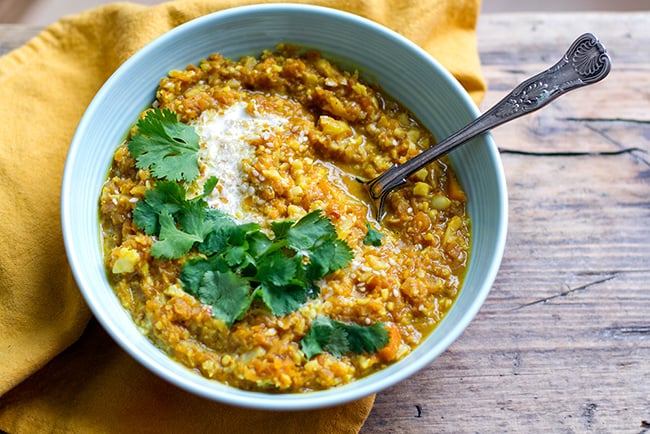
Quick & Easy Pumpkin Chicken Curry
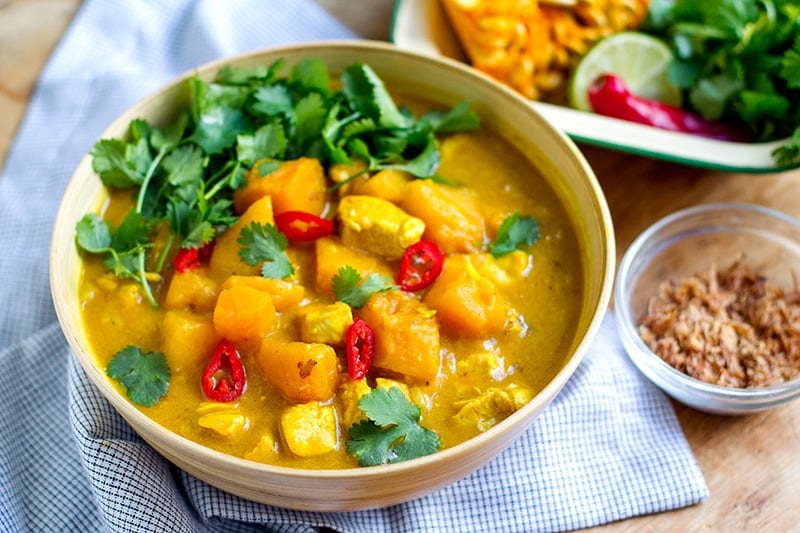
Kabocha Squash & Beetroot Salad
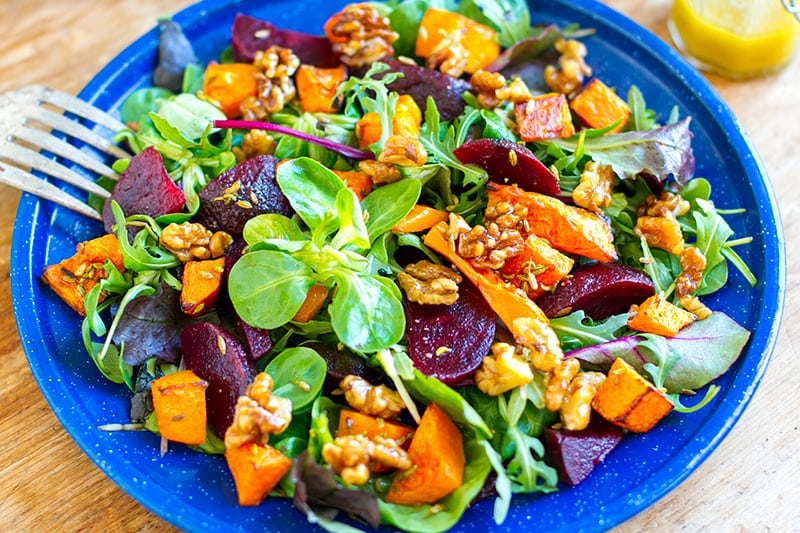
Dukkah Crusted Roasted Pumpkin
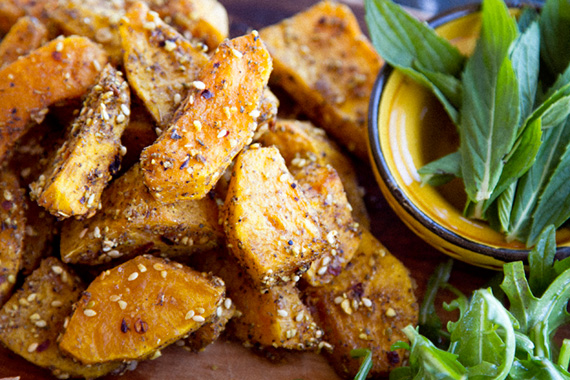
Pumpkin Tahini & Cashew ‘Hummus’ Dip
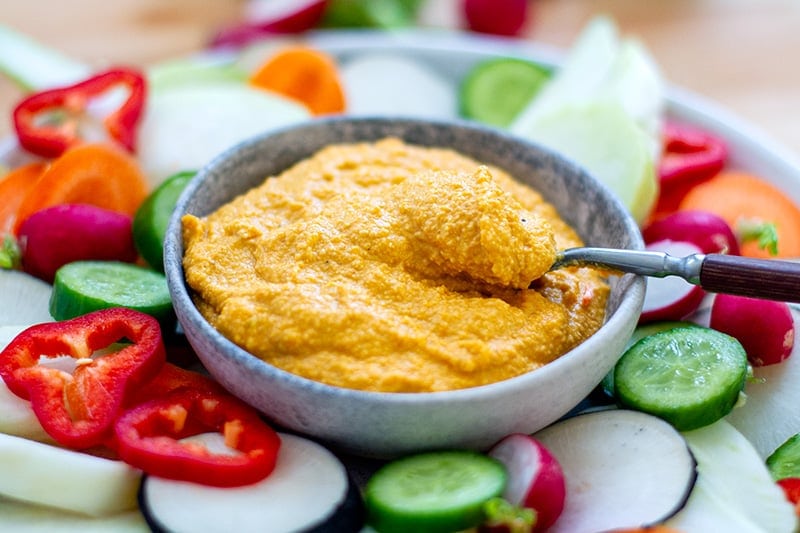
Garlic Spaghetti Squash with Herbs
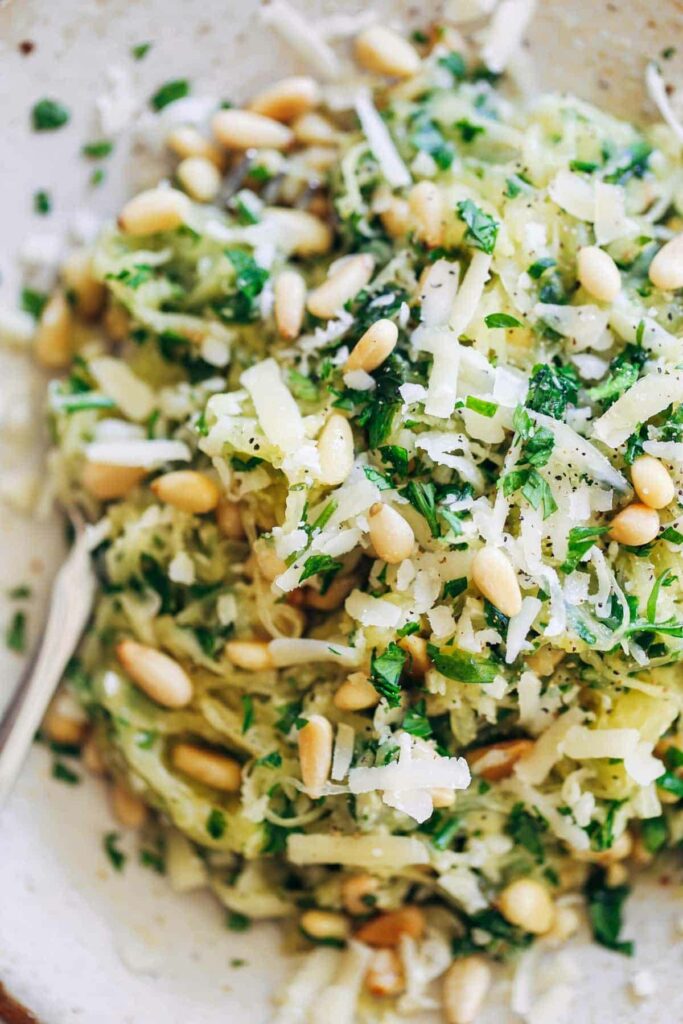
Roasted Pumpkin Salad With Garlic Tahini Dressing
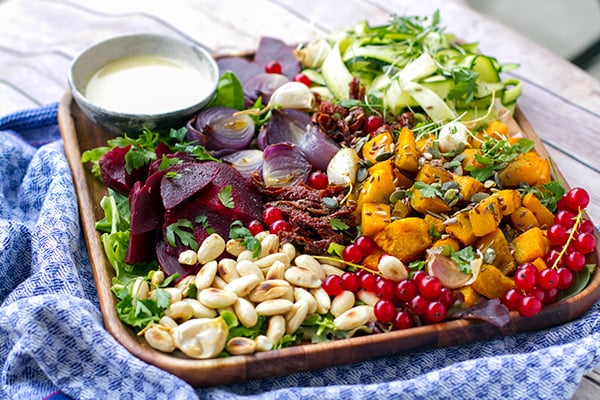
Roasted Acorn Squash With White Bean Puree
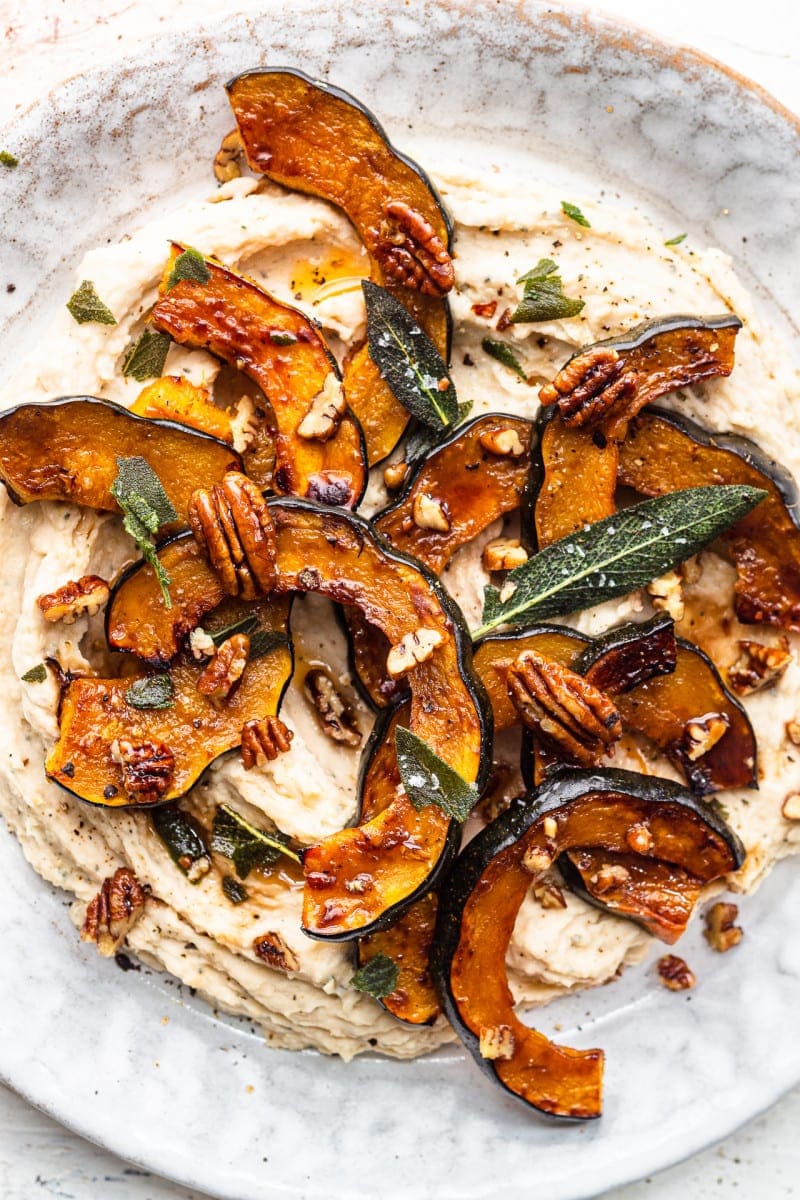
Roasted Kabocha Squash with Cranberries & Pecans
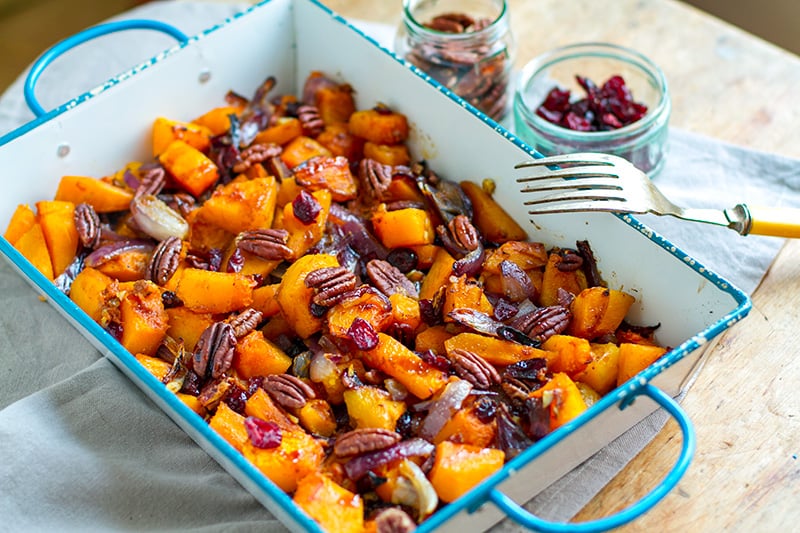
Pumpkin Pie With Pecan Crust & Topping
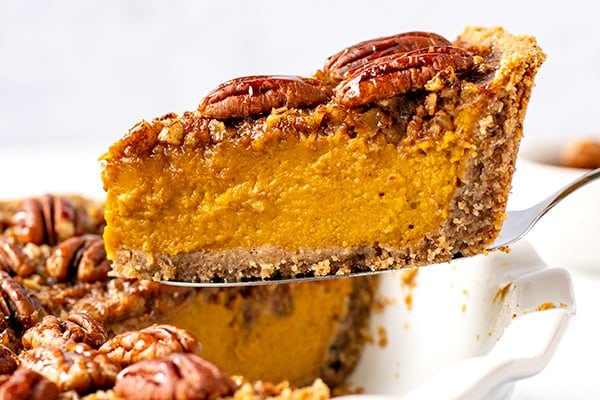
Keto Spaghetti Squash & Shrimp Bake
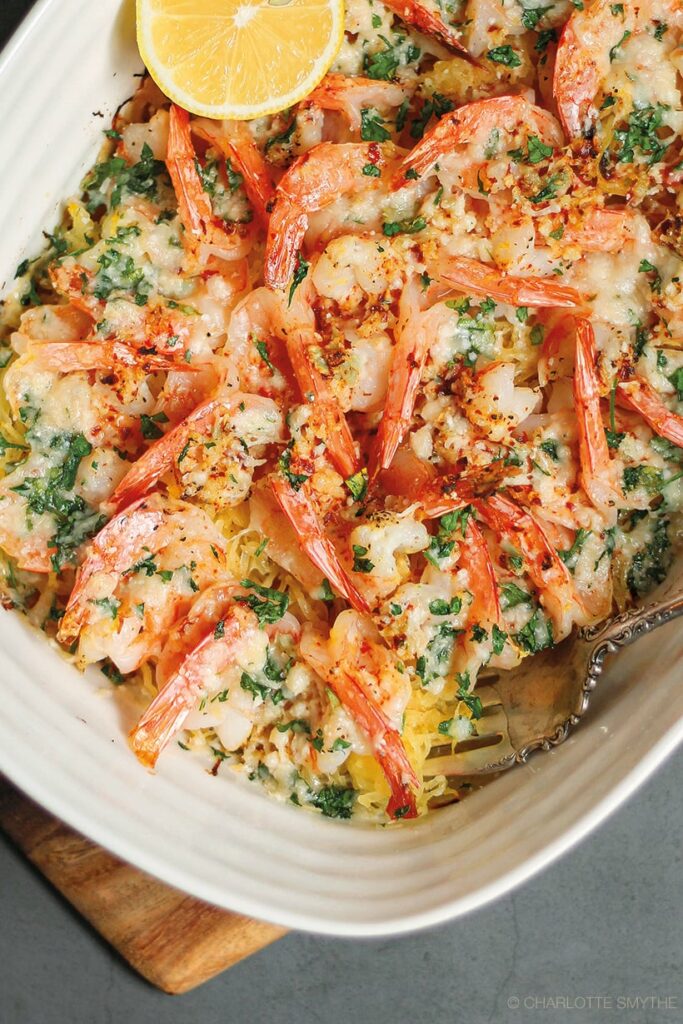
Creamy Garlic Spaghetti Squash Casserole
Paleo Pumpkin & Spring Onion Frittata
Paleo Pumpkin Chilli
Pumpkin Sticky Date Pudding (Gluten-Free, Dairy-Free)
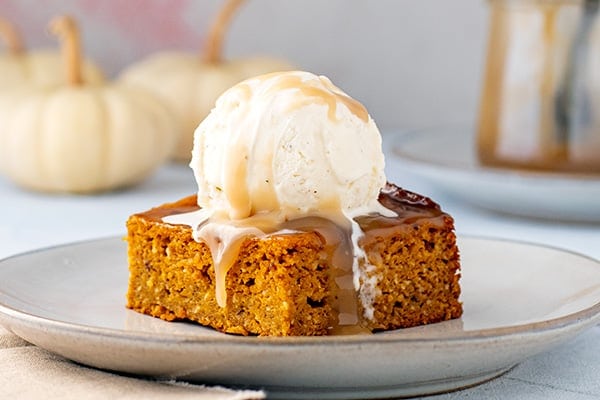
Paleo Pumpkin & Carrot Muffins
Paleo Pumpkin Pancakes
Easy Butternut Squash Pancakes With Oats
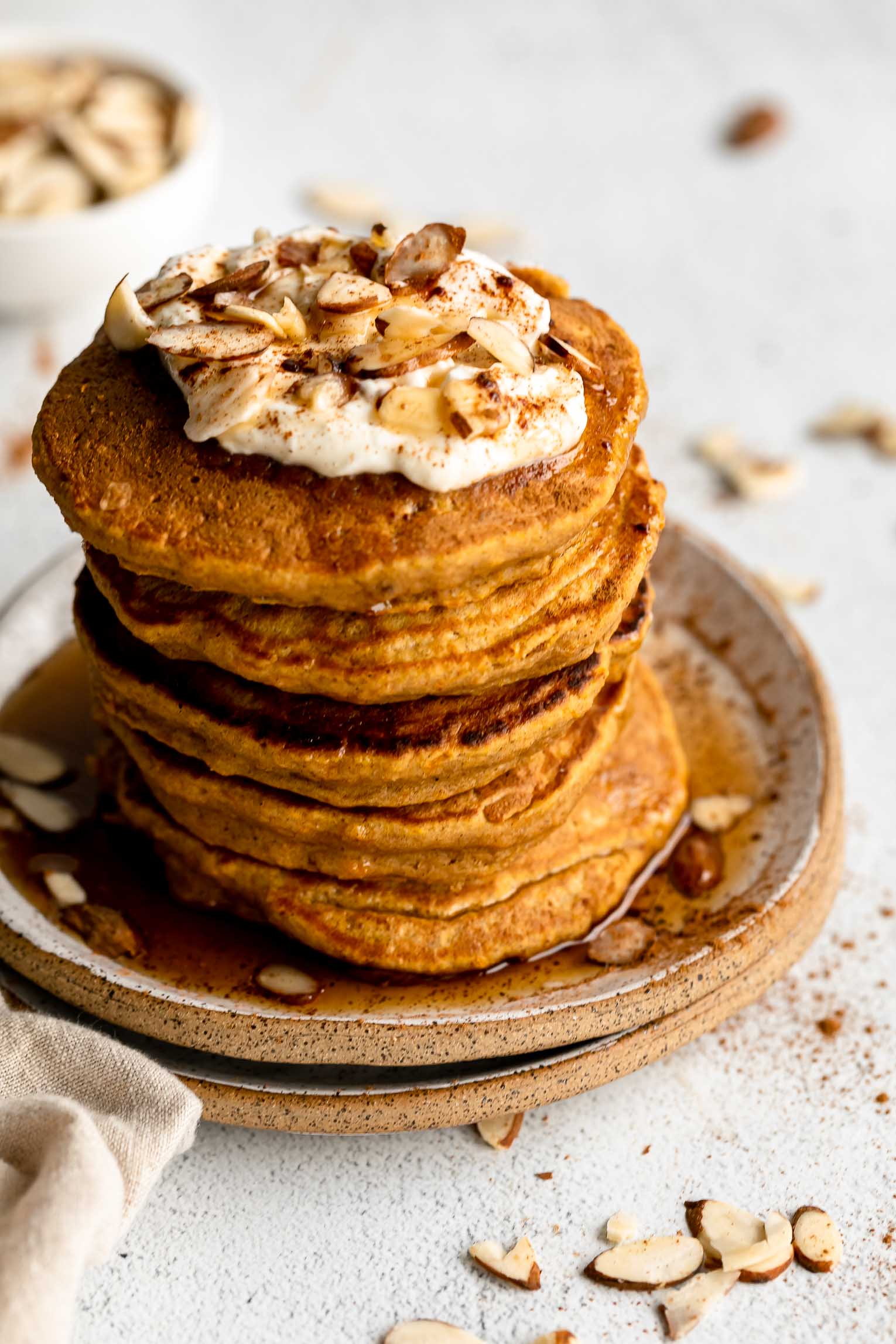
Pumpkin Pie Energy Bites
Paleo Pumpkin Swirl Cheesecake Squares
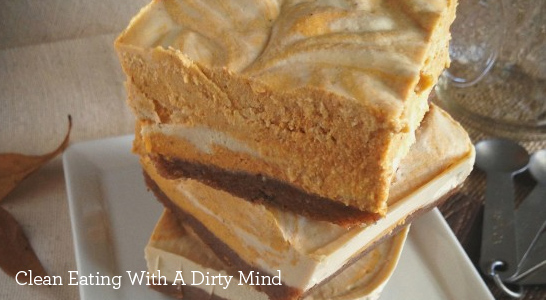
By Vanessa from Clean Eating With A Dirty Mind (as posted on Paleo Parents)

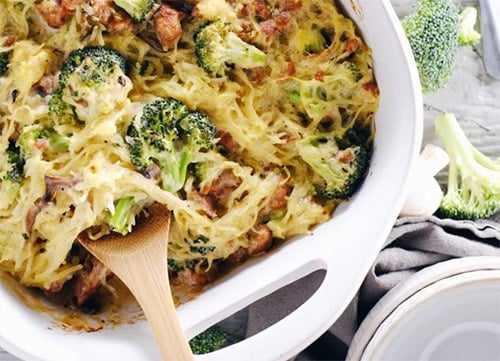
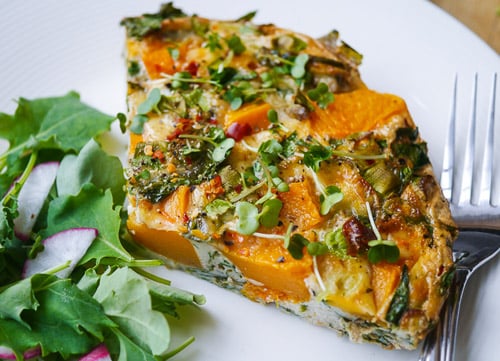
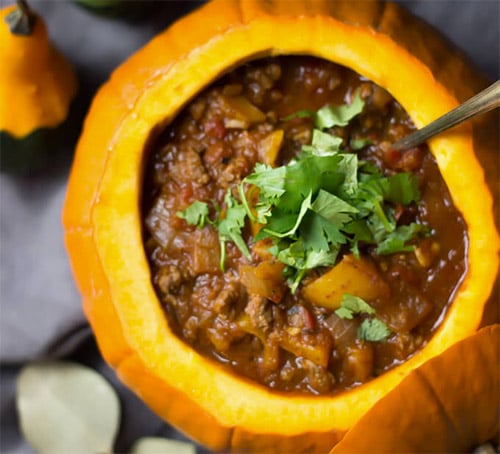
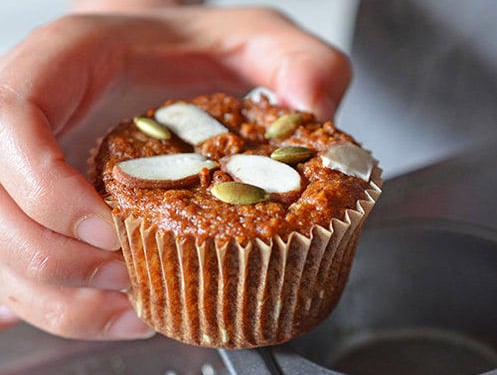
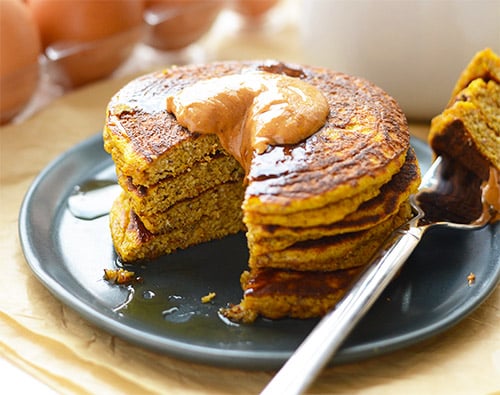
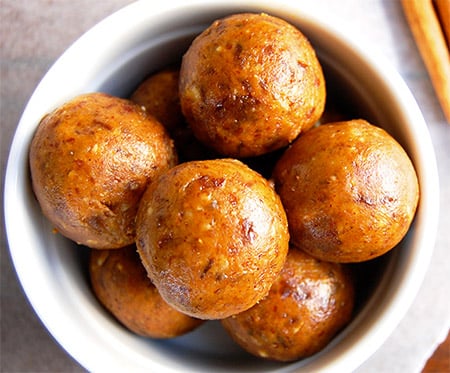

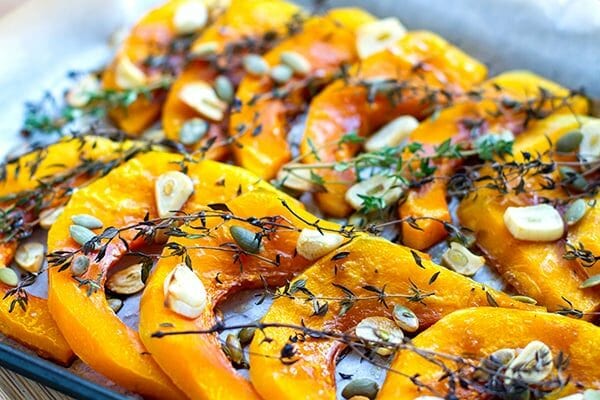
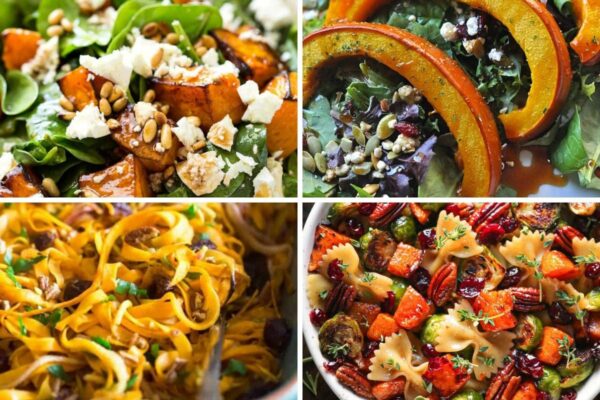
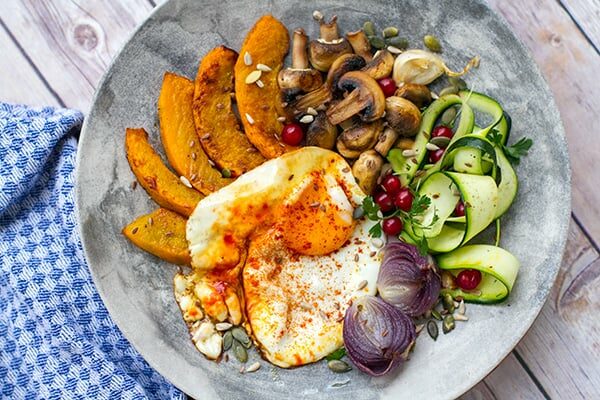
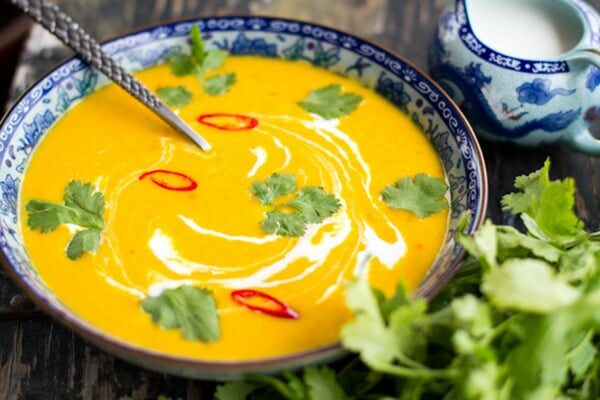
Beautiful squash fall is the best time of year I love it. I have been addicted lately to spaghetti squash. On Sunday I made shrimp scampi (no wine in the sauce) over the squash “noodles” it was most delicious served with a nice green salad. Irey you have introduced me to some new squash I wasn’t familiar with at all like Kent and Golden Nugget. I’ll be looking at my local farmers market. This was great I’ve seen most varieties but had no idea what to do with them. Excellent post 🙂
Great guide to pumpkin and it’s uses. However, as one of the few Australian paleo blogs I was disappointed to see the temperatures in farenheit instead of celseuis for some of the recipes. I love your recipes and that they cater to Australian tastes rather than the plethora of American paleo recipes.
Some great recipes here!
And don’t forget, you can roast all winter squash seeds in exactly the same way as you would roast pumpkin seeds….
The Dukkah crusted pumpkin and butternut squash and sausage stew with roasted tomatoes and onions sound like a feast! And well, all the sweets recipes also.
These all look so mouthwatering! We love winter squash! There are so many options and ideas for how to use it! Thanks so much for including our spaghetti squash casserole in your roundup! 🙂
Thanks guys 🙂
Hi there asking from New Zealand. I have grown some ” Cannon Balls ” and dont want to pic them too soon. They have thir flower dried off, but still green to the vine. Can you tell me what they look like when ready for picking please ?Many Thanks .Maureen
Hey Maureen, sadly I am a much better cook than a gardener so I don’t think I can answer that question. I hope you find an answer maybe on a gardening website/blog?